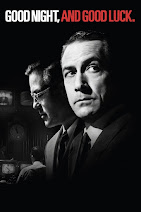"Extra! Extra! Read all about it!" This is a clique phrase heard in movies in order to alert that news is out and ready to be shared. Newsies, a film dedicated to highlight the lives of mid ninetieth century newsboys who went on strike to increase their pay. This began as a musical on Broadway and made its way to a Disney film. It did hold dramatized premises that did not really happen however, it got the message across to a group of people who were unaware of the history.
I have been a musical theatre fan since I was very little. It is what influenced me to study journalism and continue to allow my voice to be heard. I have a special place in my heart for Newsies as it was a trip I took with my theatre to go see. I was even able to dance with some cast members before the show. At the time I did not realize the effect this musical would have on today's influx.
 On July 20,1899, The strike of the Newsies began. Prices of newspapers increased by 10 cents and left newsboys, ages 18 and younger, having to sell more to make more. Newsboys would buy a stack of 100 newspapers for 50 cents and sell to the public a penny a paper. New York World and the New York Journal decided to raise the price and made the papers go from 50 cents to 60 cents. In order for the newsboys to continue making their salary they had to work harder in order to sell an extra 10 papers. Selling every paper was a must because giving papers back was not an option. This seemed impossible for the boys since they were already having trouble selling papers and so they went on their second strike, the Newsboys Strike of 1899.
On July 20,1899, The strike of the Newsies began. Prices of newspapers increased by 10 cents and left newsboys, ages 18 and younger, having to sell more to make more. Newsboys would buy a stack of 100 newspapers for 50 cents and sell to the public a penny a paper. New York World and the New York Journal decided to raise the price and made the papers go from 50 cents to 60 cents. In order for the newsboys to continue making their salary they had to work harder in order to sell an extra 10 papers. Selling every paper was a must because giving papers back was not an option. This seemed impossible for the boys since they were already having trouble selling papers and so they went on their second strike, the Newsboys Strike of 1899.
This was a pinnacle to history because it was the introduction of urban child-welfare practices and let to the improvement of newsboys' quality of life. They brought child labor to light and encouraged a child labor reform.
















